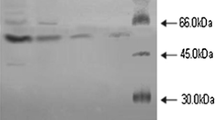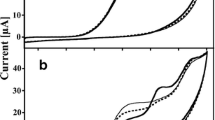Abstract
The recovery process of the phenolic compounds from the coffee industry by-products and their antioxidant activity were investigated in this work. The coffee by-products (coffee pulp, husk, silver skin, and spent coffee) were obtained from coffee processing industry. The phenolic conserves were extracted using solvent mixture of isoproponal and water. The yield of the conserve was highest in case of silver skin (25%) followed by spent waste (19%) and cherry husk (17%) when pretreated with viscozyme. The conserve enclosed chlorogenic acid as major component when analyzed with high-performance liquid chromatography. The bioactive conserves prepared from coffee by-products possessed 65%–70% antioxidant activity. Apart from these, the coffee by-products encompassed total dietary fiber of 40%–80%. Whereas the soluble and insoluble fiber proportion of the coffee by-product ranged between 16–35% and 18–64%, respectively. The antioxidant activity of coffee by-product fiber ranged from 1.5 to 2.0 mmol trolox/100 g and is analogous to that of widespread fruits and fresh vegetables. The hydration properties such as water holding capacity of each by-product was strictly related to the amount of insoluble fiber and to the granulometry. This is the first report on the isolation of bioactive and functional compounds from coffee by-products and can be a source of new value-added products such as phenolic antioxidant adjunct for food processing.



Similar content being viewed by others
References
AOAC (2005). Chlorogenic acid in green coffee. Official methods of analysis of AOAC International (18th ed.). AOAC, Arlington, VA.
Arvanitoyannis, I. S., & Tserkezou, P. (2008). Wheat, barley and oat waste: a comparative and critical presentation of methods and potential uses of treated waste. International Journal of Food Science & Technology, 43(4), 694–725.
Arvanitoyannis, I. S., Kassaveti, A., & Stefanatos, S. (2007). Olive oil waste treatment: a comparative and critical presentation of methods, advantages and disadvantages. Critical Reviews in Food Science and Nutrition, 47(3), 187–229.
Borrelli, F., Esposito, A., Napolitano, A., Ritieni, A., & Fogliano, V. (2004). Characterization of new functional ingredient: coffee SS. Journal of Agricultural and Food Chemistry, 52, 1338–1343.
Chung, K. T., Wong, T. Y., Wei, C. I., Huang, Y. W., & Lin, Y. (1998). Tannins and human health: a review. Critical Reviews in Food Science and Nutrition, 38, 421–464.
Di Giacomo, G. G., & Taglieri, L. (2009). A new high-yield process for the industrial production of carrot juice. Food and Bioprocess Technology, 2, 441–446.
Esposito, F., Arlotti, G., Bonifati, A. M., Napolitano, A., Vitale, D., & Fogliano, V. (2005). Antioxidant activity and dietary fiber in durum wheat bran by-products. Food Research International, 38, 1167–1173.
Figuerola, F., Hurtado, M. L., Estevez, A. M., Chiffelle, I., & Asenjo, F. (2005). Fiber concentrates from apple pomace and citrus peel as potential fiber sources for food enrichment. Food Chemistry, 91, 395–398.
Jimenez-Escrig, A., Rincón, M., Pulido, R., & Saura-Calixto, F. (2001). Guava fruit (Psidium guajava) as a new source of antioxidant dietary fiber. Journal of Agricultural and Food Chemistry, 49, 5489–5493.
Klein, S. M., Cohen, G., & Cederbaum, A. I. (1991). Production of formaldehyde during metabolism of demethyl sulphoxide by hydroxyl radical generating system. Biochemistry, 20, 6006–6012.
Louli, V., Ragoussis, N., & Magoulas, K. (2004). Recovery of phenolic antioxidants from wine industry by-products. Bioresource Technology, 92, 201–208.
Madhava Naidu, M., Sulochanamma, G., Sampathu, S. R., & Srinivas, P. (2008). Studies on extraction and antioxidant potential of green coffee. Food Chemistry, 107, 377–384.
Moure, A., Cruz, J. M., Franco, D., Dominguez, J. M., Siniero, J. M. J., Dominguez, H., et al. (2001). Natural antioxidants from residual sources. Food Chemistry, 72, 145–148.
Pellegrini, N., Yang, M., & Rice-Evans, C. (1999). Screening of dietary carotenoids and carotenoids-rich frits extracts for the antioxidant activities applying ABTS radical cation decolorization assay. Methods in Enzymology, 299, 379–389.
Pushpa, S. Murthy, & Madhava Naidu (2010). Production and application of xylanase from Penicillium sp. Utilizing coffee by-products. Food Bioprocess Technology, doi:10.1007/s11947-010-0331-7, in press.
Pushpa, S. Murthy, Madhava Naidu, & Srinivas, P. (2010). Production of α-amylase under solid-state fermentation utilizing coffee waste. Journal of Chemical Technology and Biotechnology, 84, 139–143.
Raghavendra, S. N., Rastogi, N. K., Raghava Rao, K. S. M. S., & Tharanathan, R. N. (2004). Dietary fiber from coconut residue: effects of different treatments and particle size on the hydration properties. European Food Research and Technology, 218, 563–567.
Ramalakshmi, K., Rao, J. M., Takano-Ishikawa, Y., & Goto, M. (2009). Bioactivities of low-grade green coffee and spent coffee in different in vitro model systems. Food Chemistry, 115, 79–85.
Ramirez-Coronel, M. A., Nathalie Marnet, V. S., Kolli, K., Roussos, S., Guyot, S., & Augur, C. (2004). Characterization and estimation of proanthocyanidins and other phenolics in coffee pulp (Coffea arabica) by thiolysis–high-performance liquid chromatography. Journal of Agricultural and Food Chemistry, 52(5), 1344–1349.
Robertson, J. A., & Eastwood, M. A. (1981). A method to measure the water-holding properties of dietary fiber using suction pressure. The British Journal of Nutrition, 46, 247–255.
Saura-Calixto, F. (1998). Antioxidant dietary fiber product: a new concept and a potential food ingredient. Journal of Agricultural and Food Chemistry, 46, 4303–4306.
Shimada, K., Fujikawa, K., Yahara, K., & Nakamura, T. (1992). Antioxidative properties of xanthin on autooxidation of soybean oil in cyclodextrin emulsion. Journal of Agricultural and Food Chemistry, 40, 945–948.
Singleton, V. L., & Rossi, J. (1965). Calorimetry of total phenolic with phosphomolybdic–phosphotungstic acid agents. American Journal of Enology and Viticulture, 16, 144–158.
Sowbhagya, H. B., Florence Suma, P., Mahadevamma, S., & Tharanatahn, R. N. (2007). spent residue from cumin—a potential source of dietary fiber. Food Chemistry, 104, 1220–1225.
Trowell, H. (1974). Definitions of fiber. Lancet, 1, 503–505.
Vasso Oreopoulou, V., & Russ, W. (2007). Utilization of by-products and treatment of waste in food industry (pp. 209–232). New York: Springer.
Vendruscolo, F., Albuquerque, P. M., Streit, F., Esposito, E., & Ninow, J. L. (2008). Apple pomace: a versatile substrate for biotechnological applications. Critical Reviews in Biotechnology, 28, 1–12.
Venus, J., & Richter, K. (2007). Development of a pilot plant facility for the conversion of renewables in biotechnological processes. Engineering of Life Sciences, 7(4), 395–402.
Zielinski, H., & Kozlowska, H. (2000). Antioxidant activity and total phenolics in selected cereal grains and different morphological fractions. Journal of Agricultural and Food Chemistry, 48, 2008–2016.
Acknowledgements
We thank Dr. V. Prakash, Director, CFTRI, Mysore, for constant encouragement. Thanks are also due to Dr. P. Srinivas, Head, Department of Plantation Products Spices and Flavour Technology, CFTRI, for his support. The finical help from CSIR, New Delhi, is gratefully acknowledged.
Author information
Authors and Affiliations
Corresponding author
Rights and permissions
About this article
Cite this article
Murthy, P.S., Naidu, M.M. Recovery of Phenolic Antioxidants and Functional Compounds from Coffee Industry By-Products. Food Bioprocess Technol 5, 897–903 (2012). https://doi.org/10.1007/s11947-010-0363-z
Received:
Accepted:
Published:
Issue Date:
DOI: https://doi.org/10.1007/s11947-010-0363-z




